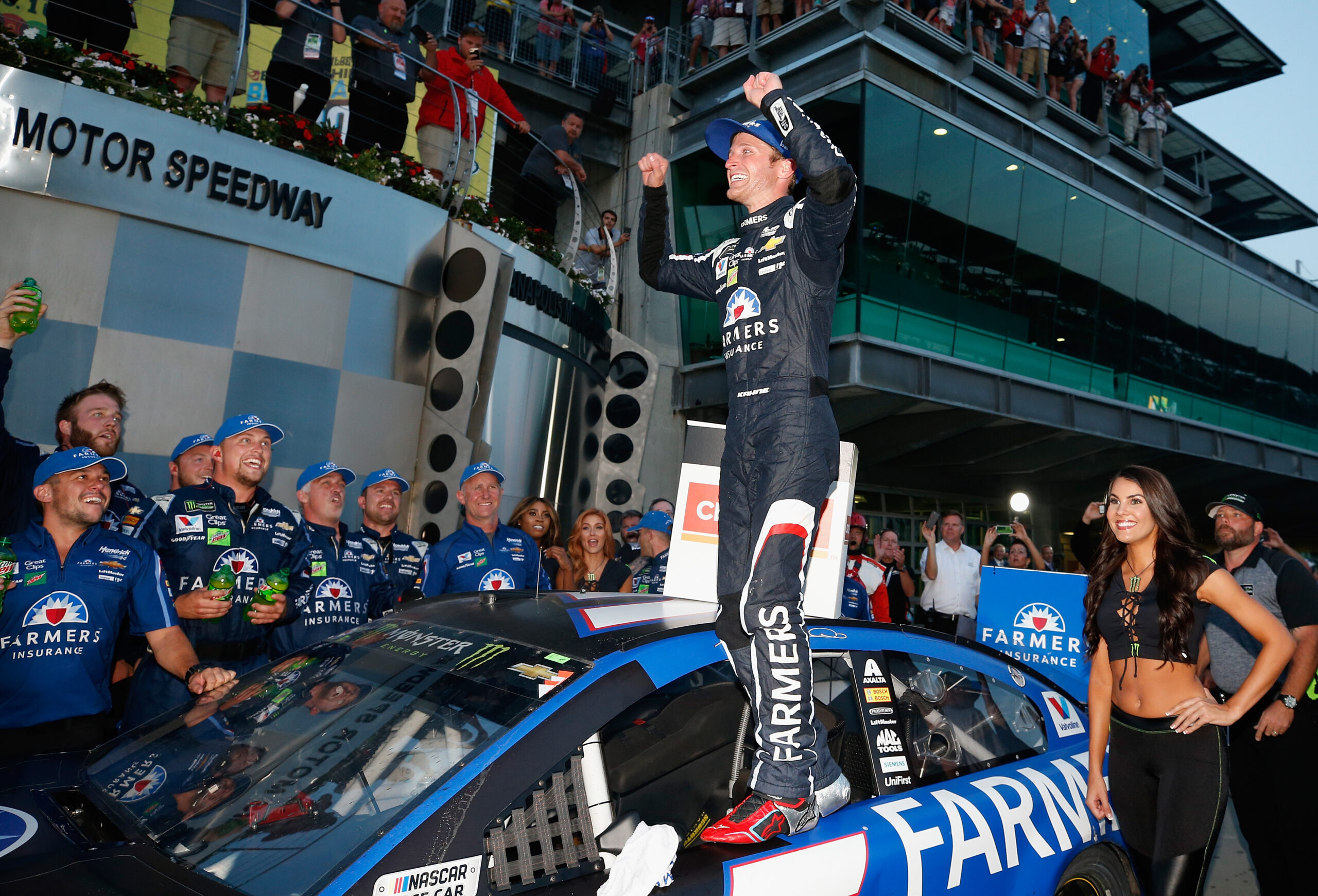When NASCAR announced they would be implementing a new convoluted package at the Indianapolis Motor Speedway this year, a package that included restrictor plates and aero ducts near the grille area, I was incredibly skeptical that it would work. And honestly, why shouldn’t I be? I’ve heard this story from NASCAR before, that what they’re trying will “enhance” the racing, only for it to royally bomb. This came across as just another attempt by the sanctioning body to save a race weekend at a track that never was and never will be suited for stock car racing.
But then race day arrived, we saw the results firsthand and Saturday’s XFINITY Series Lilly Diabetes 250 was phenomenally serviceable.
While in the past, the lead car had a greater aero advantage and could simply pull away from the cars behind, the trailing cars this time around could reel in the lead cars.
Well, that’s all fine and dandy for cars down through the running order, but what about getting to the lead car? I won’t say the leader didn’t still have an aero advantage, but it was much more negated than in any previous race at the Brickyard, be it XFINITY or the Monster Energy NASCAR Cup Series.
The numbers show that there were 16 lead changes, a new track record in the XFINITY Series (it was previously nine lead changes). However, those numbers don’t tell you that 10 of those took place during pit cycles (green and/or yellow). So we’re left with six that occurred on-track during green flag racing, which, proportionally, is on the lower end of what I’d expect for a XFINITY Series race not held at Daytona or Talladega.
Hence, this is why I say this race was “phenomenally serviceable.” It was better than anything I’ve seen previously at the Brickyard, but this package could still use some work, especially on long runs. If you didn’t get a great restart, passing was, while not impossible or even difficult, a little harder.
That’s not just my view, that’s also the view of No. 22 Team Penske Ford driver Joey Logano.
“The package was really interesting. You had to race really smart,” he said in his post-race press conference. “For us, we may not have had the fastest Discount Tire Ford, so I had good restart early in the race and was able to get some track position. Then our pit crew and everyone did a great job of maintaining that track position. You just had to be smart on restarts and knowing when to race guys and when to just keep momentum because if you started losing momentum you lost five or six spots. Being smart inside the car was key. I just wanted a faster car. That would have been key to do that to go up there and race with those guys.”
Teammate Brad Keselowski was also asked if this package is the way to go for at Indianapolis.
“Not the restrictor plate, but the air ducts are the way to go, for sure,” he said. “That was a huge gain and something I’ve been pushing on NASCAR for a while, so it’s good to see them do it and give it a shot over there.”
Bottom line, this package could use some work, but it’s the direction in which to go for Indianapolis. While I still believe the XFINITY Series belongs at Indianapolis Raceway Park (or Lucas Oil Raceway or whatever name the track goes by now), at least the race it was replaced with is no longer an absolute joke. Also, whoever at NASCAR concocted this deserves a raise and/or promotion.
That’s my view for what it’s worth.








An improvement but way to many crashes and delays. To many racers eliminated from competition. Yet perhaps the crashes will improve on the 20,000 fans who were in attendance???